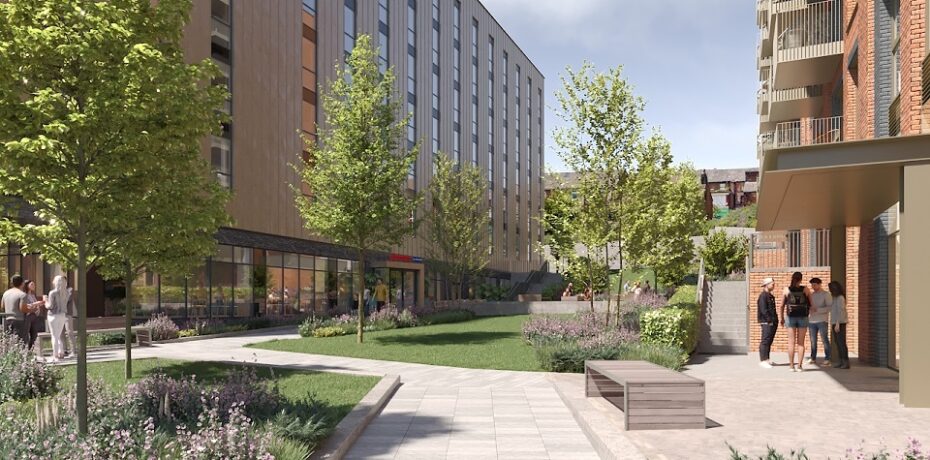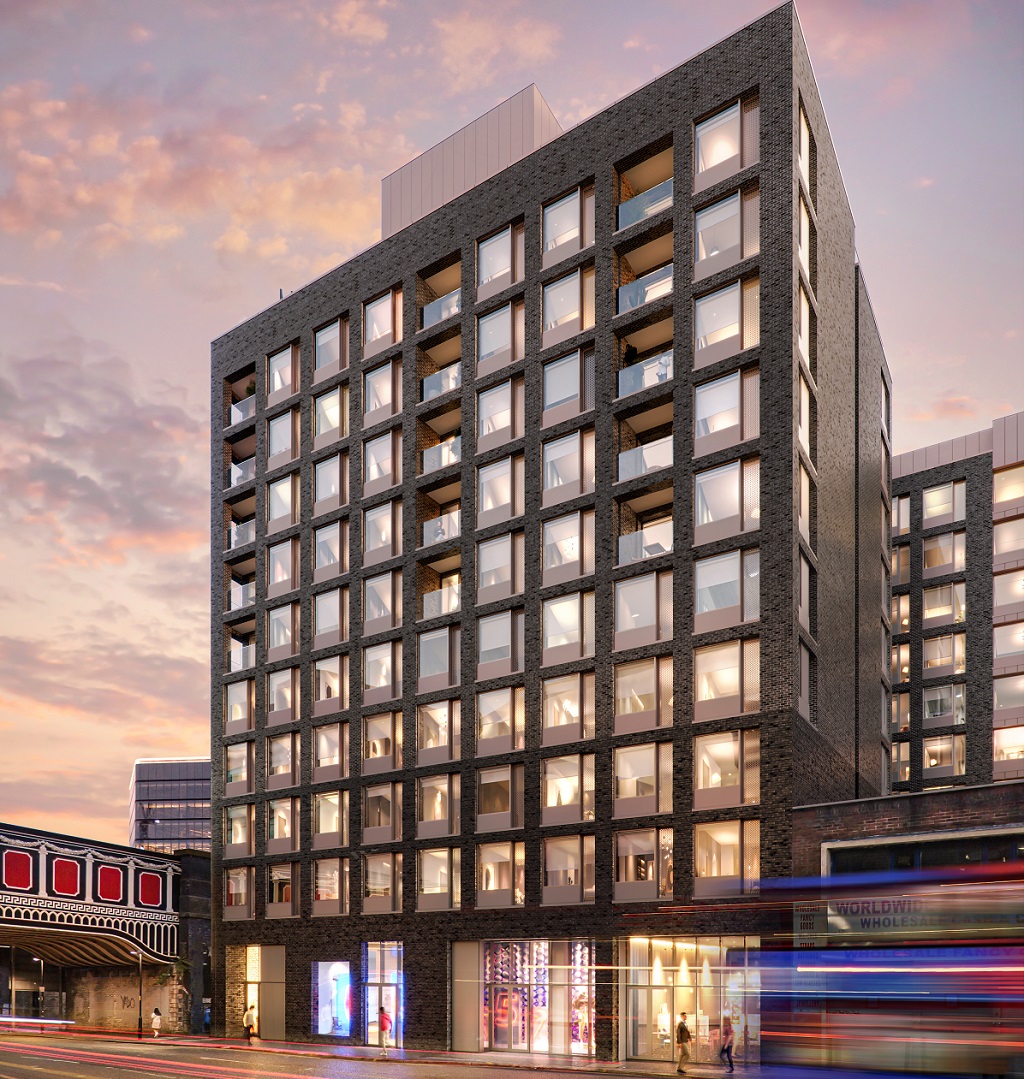The Subplot
The Subplot | BTR, Nimbys, health property
Welcome to The Subplot, your regular slice of commentary on the business and property market from across the North of England and North Wales.
THIS WEEK
- Living forever: this summer, are residential developments like build-to-rent going to flourish when all around wilts?
- Elevator pitch: your weekly rundown of who is going up, and who is heading the other way
LIVING FOREVER
The build-to-rent and student housing sectors are unsinkable, yes?
A big Rochdale BTR deal, agreed at a sporty price, suggests that the living sector is bulletproof. True?
Genr8 Kajima and Rochdale Council’s 242-apartment Upperbanks development in Rochdale town centre has been sold to Ancoats-based BTR operator Livingway for something more than £30m, Place North West reported. It’s a big number for Rochdale property, and a proof-of-concept for BTR in town locations. The bigger story is that it comes at a slightly odd time for UK build-to-rent: everyone has their fingers crossed that the residential sector is as safe as houses at a time when too much of the commercial market looks wobbly, unpredictable, or just plain defunct.
Funny numbers
Resi lenders think that the tide of economic distress will have to reach unfeasibly high before it sinks the sector. Yet even upbeat money people are asking searching questions: this week Subplot spoke to several lenders and intermediaries and was told, repeatedly, that too often assumptions on rental growth and capital value were unreasonable or fantastic.
Careful spenders
That, plus rising debt costs and softening yields, explains the sudden crash in the volume of BTR transactions. Simply put, it would be hard to generate enough rental income to pay off the debt. Total investment in the sector was a record-breaking £4.3bn in 2022, but the first quarter of 2023 managed to scrape just £820m, the lowest start to the year since 2018 (source: Savills data).
Or these numbers instead
You can cut this cake in a variety of ways, but the result is always the same. Alternative data from BNP Paribas Real Estate puts Q1 2023 at £1.1bn, that’s sharply down on £1.5bn in Q1 2022, so we wind up in the same place. JLL’s take, which embraces a slightly wider pool of asset classes, is even gloomier: investment in UK build-to-rent, student, and healthcare in Q1 2023 totalled £2.1bn – half the amount for the same period in 2022. (See Elevator Pitch below for more on health property.)
Opportunity cost
It’s not so much that the living sector is going off the boil, but that if you have to invest now there might, at this precise moment, be other places to put your money to greater effect and with more liquidity. For instance, the Investment Property Forum spring 2023 consensus forecast gets fairly steamy about retail warehousing.
Wait and see
The Rochdale deal is well deserved, a great vote of confidence in out-of-city centre BTR, and no doubt the maths make sense. Demand in BTR, and student housing, is well attested as is the lack of supply. But with overseas investors largely sitting this out, and local players having to be careful about debt, we might not get many more deals like it until early next year. Assuming, of course, the economic future is easier to read then than it is now.
 ELEVATOR PITCH
ELEVATOR PITCH
Going up, or going down? This week’s movers
Turns out generating rental income is a lot easier than maintaining capital values in health property. Meanwhile, cracks are appearing in the Green Belt consensus. Doors closing!
 Health property
Health property
Health property – particularly GP surgeries – was one of the big niche alternative property investment sectors of the last decade, built on the promise of safe, regular income. Is it still such a good bet? Assura, now moving into a new Altrincham HQ, has had a tough time.
Rental income (less costs) is growing nicely, up 12.4% in the year to April 2022, but the value of the portfolio has taken a hit. As a result, the ratio of net debt to net asset value – loan-to-value ratio, if you like – has risen from 52% three years ago, to 71% in the latest figures. No doubt it will get worse. Like so many indebted businesses, if it weren’t for all that lovely rental income pouring in you might ask yourself if everything was okay. Indeed, the stock market is doing exactly that, pricing Assura shares below the REIT’s net book value, never a happy sign.
Even so, the health property sector is still attracting money. This week OneMedical Property secured a £30m facility from OakNorth Bank to help it develop a medical centre in Wigan (and two in the South East). Unlike Assura, OneMedical builds and bundles-up and sells on, so lenders know there’s an exit ramp. A market worth watching.
 Nimbys
Nimbys
Cracks are appearing in the public consensus on Green Belt according to a poll commissioned by Cratus, the public affairs consultancy. The regional breakdown of the results has been shared with Subplot.
Cratus asked two questions about Green Belt; both need reading carefully. First, would you support Green Belt development if it only affected brownfield plots, or the replacement of existing buildings? Note: this wasn’t a question about fields. The national average was 57% saying ‘yes’, but it edged up a little in the North West (57%) and North East (61%). Yorkshire, however, was by no means so keen (49%).
The second question: which party is most likely to protect Green Belt? Nationwide the answer was overwhelmingly Greens (44%), with everyone else way behind including Labour a distant second (18%). Surprised it wasn’t the Tories in second place? Subplot was. But in the North West and North East the Labour Party scored unusually high (24% each, extending their lead over the third-placed Conservatives) suggesting that the North’s ruling party has a modest but real local reputation for opposing Green Belt schemes.
It’s a bit early for post-General Election predictions, but on the strength of this evidence, it’s going to take a lot of work for developers to chip away at Green Belt in Yorkshire, while in the North West and North East developers may encounter localised Labour opposition, despite the official Labour pro-development policy on housing.
Get in touch with David Thame: david.thame@placenorth.co.uk





Perhaps one discussion on the Green Belt should be the idea of planting biodiverse woodlands, close to residents, on much of these. Not all Green is that pretty – let’s beautify it.
By SW